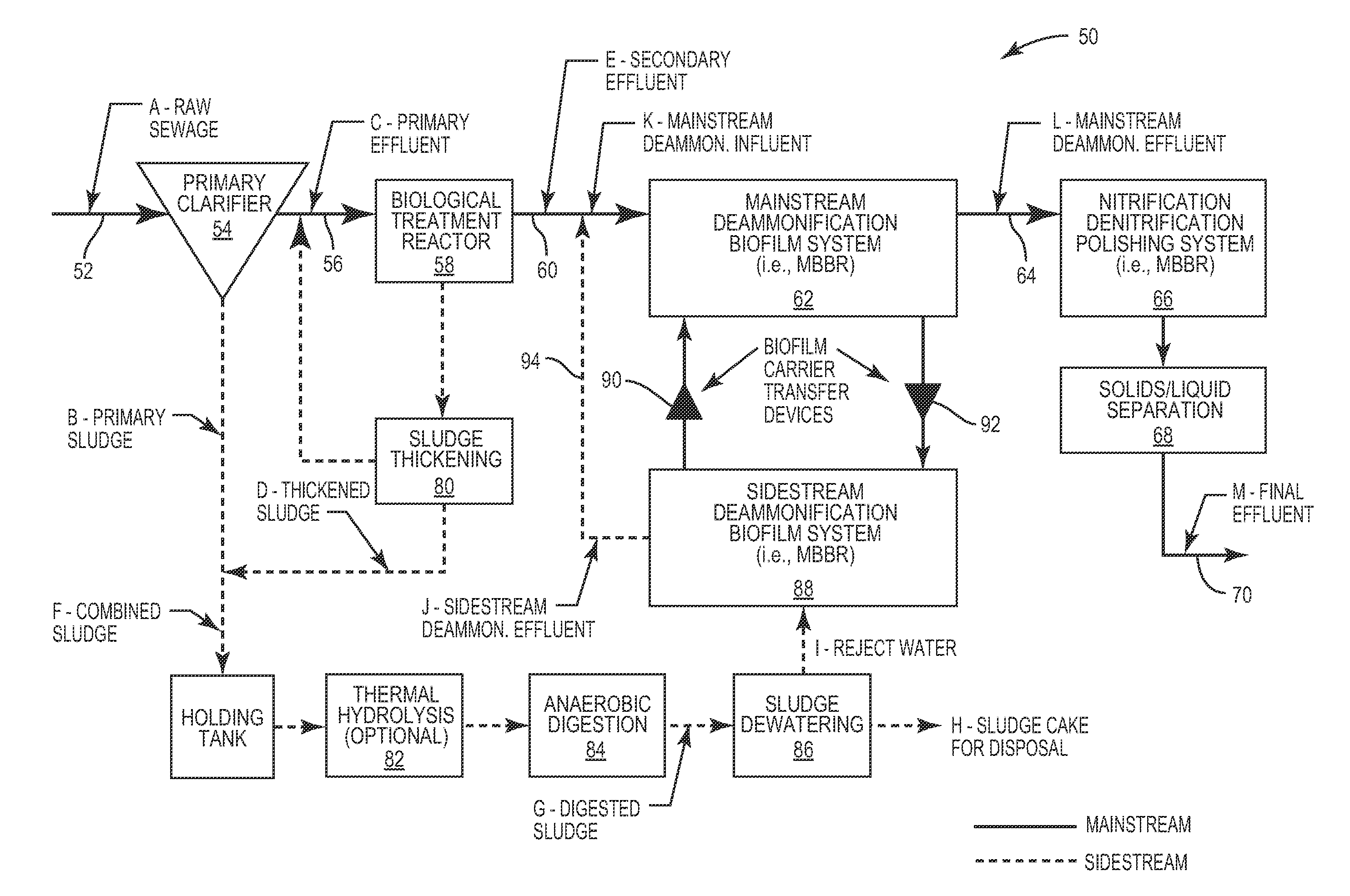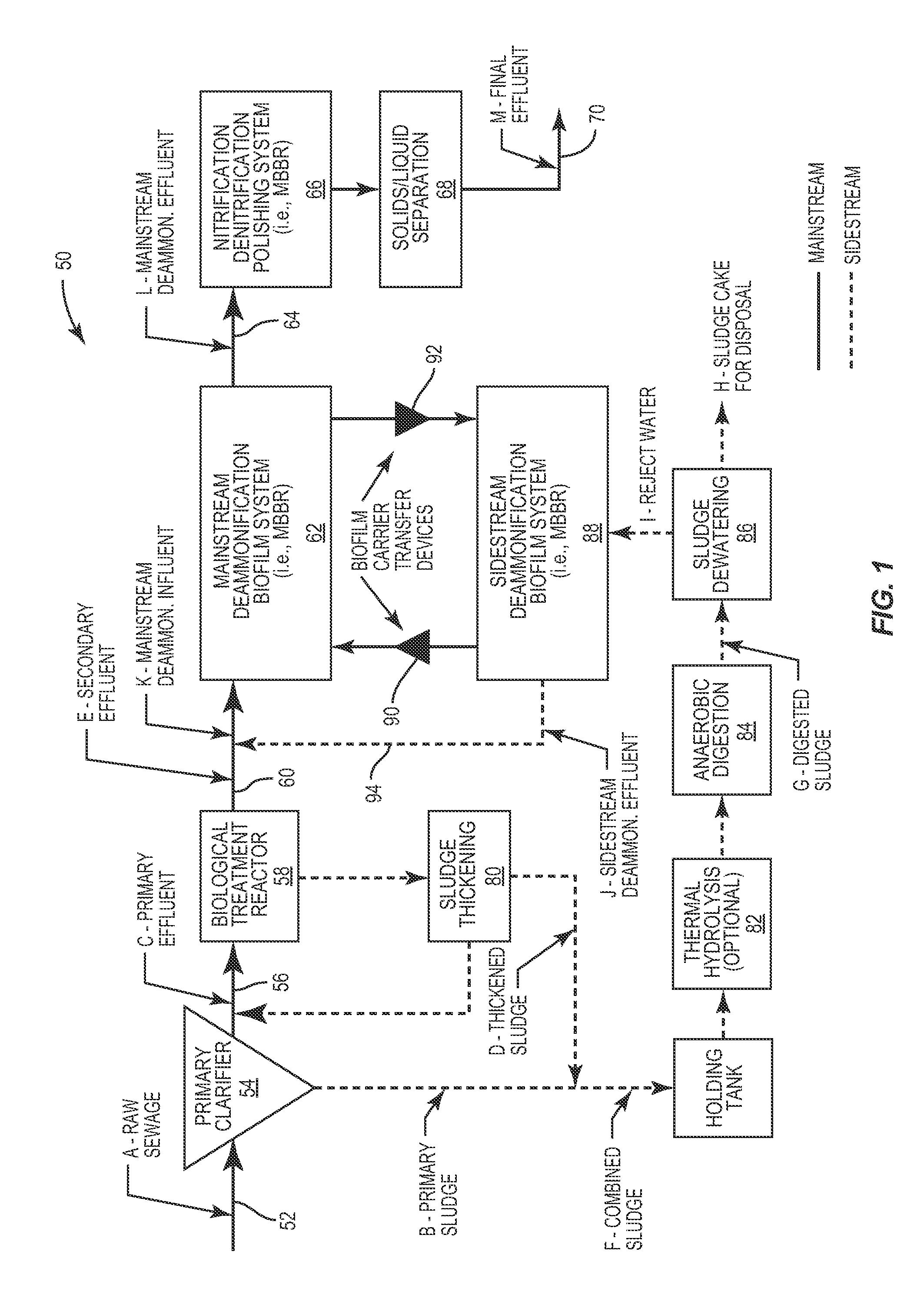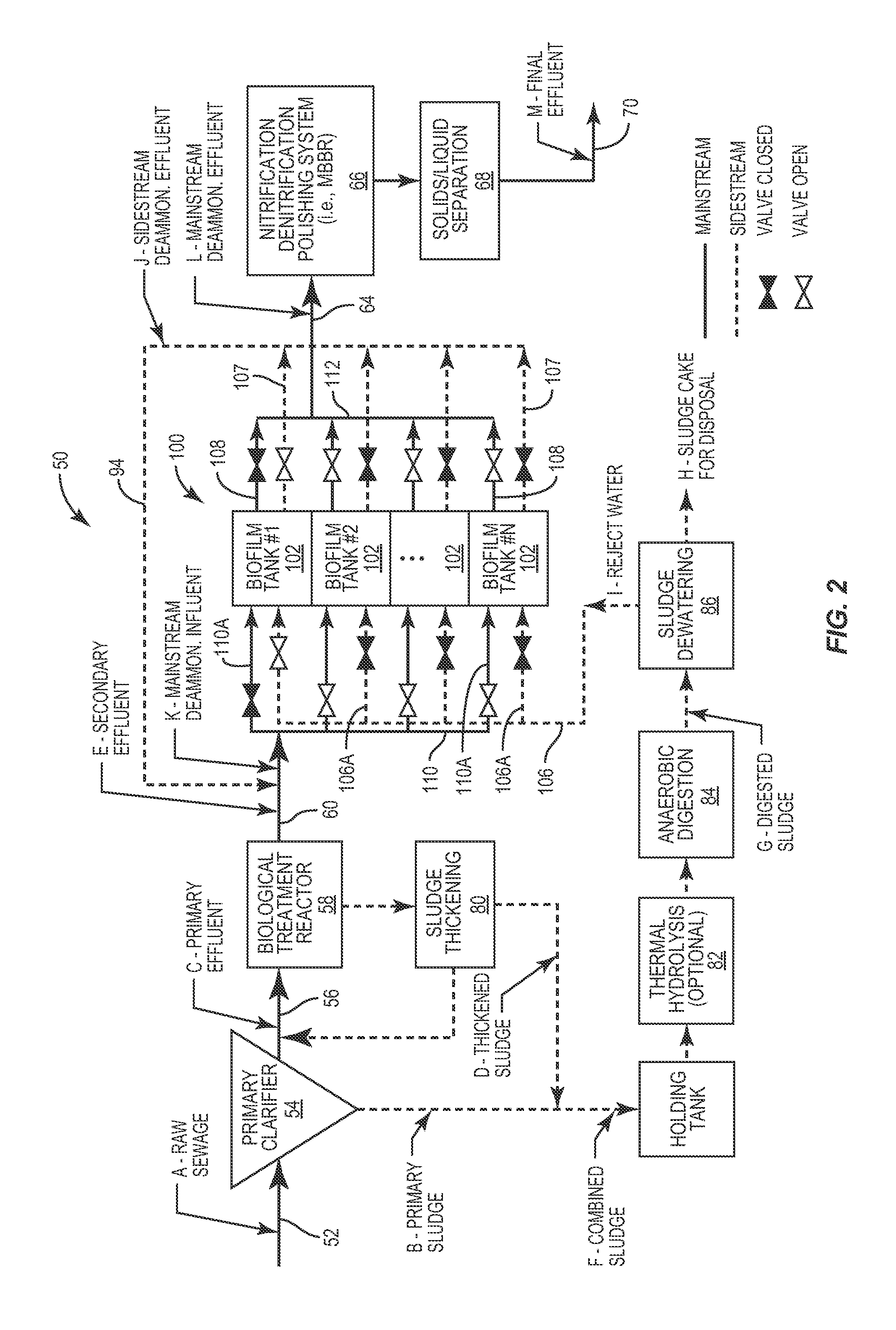Process for Removing Ammonium from a Wastewater Stream
- Summary
- Abstract
- Description
- Claims
- Application Information
AI Technical Summary
Benefits of technology
Problems solved by technology
Method used
Image
Examples
Embodiment Construction
[0021]The present invention relates to a process for removing ammonium-nitrogen, NH4—N, where ammonium nitrogen is oxidized to nitrite-nitrogen without producing substantial nitrate-nitrogen and then the nitrite-nitrogen is denitrified to produce elemental nitrogen. This basic process is performed both in the sidestream and mainstream of a wastewater treatment system and process. As described below, certain bacteria capable of carrying out this form of ammonium-nitrogen removal is grown in the sidestream and used to remove ammonium nitrogen in the sidestream. Conditions in the sidestream that are conducive to growing bacteria capable of performing this process is maintained in the sidestream. From time-to-time this bacteria is brought into contact with the wastewater in the mainstream and the bacteria functions to remove ammonium nitrogen from the wastewater in the mainstream according to this process. However, the conditions in the mainstream are not conducive for growing the bacte...
PUM
 Login to View More
Login to View More Abstract
Description
Claims
Application Information
 Login to View More
Login to View More - R&D
- Intellectual Property
- Life Sciences
- Materials
- Tech Scout
- Unparalleled Data Quality
- Higher Quality Content
- 60% Fewer Hallucinations
Browse by: Latest US Patents, China's latest patents, Technical Efficacy Thesaurus, Application Domain, Technology Topic, Popular Technical Reports.
© 2025 PatSnap. All rights reserved.Legal|Privacy policy|Modern Slavery Act Transparency Statement|Sitemap|About US| Contact US: help@patsnap.com



